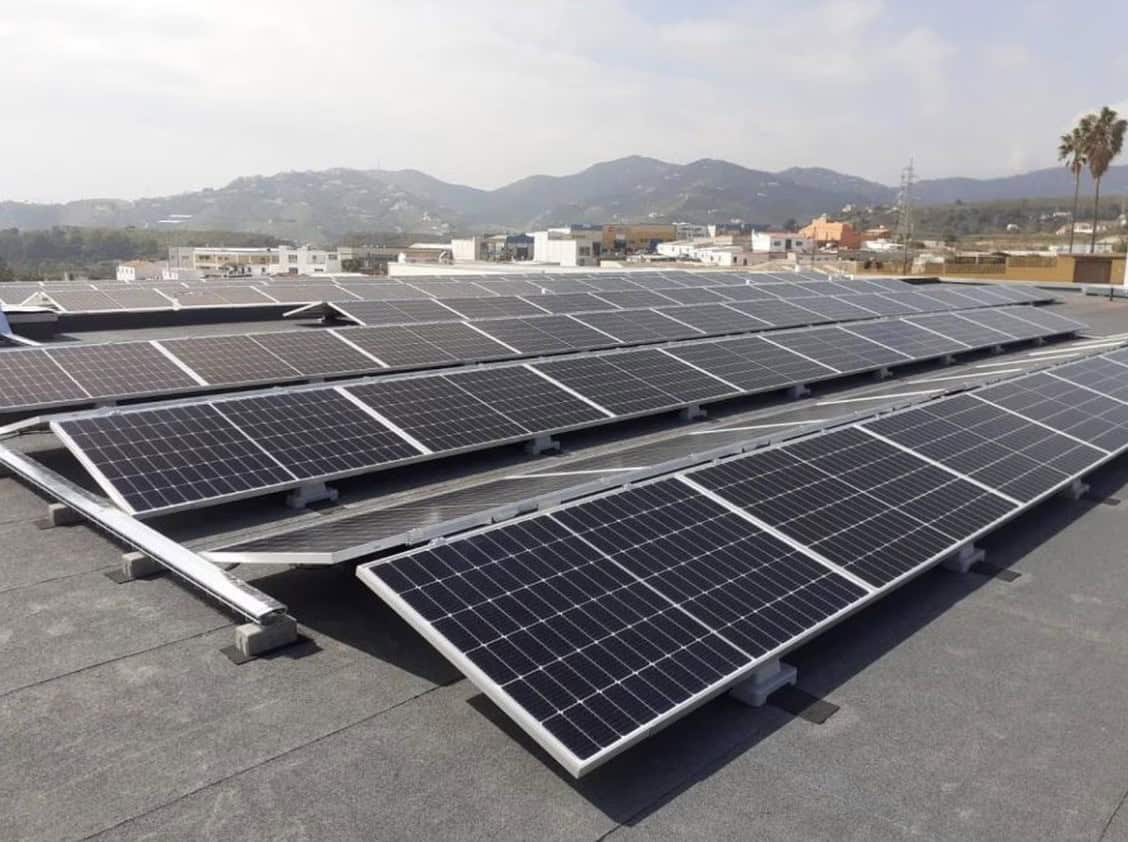The Spanish power grid on Tuesday tasted an appetizer of the renewable energy banquet that is expected to flourish in the coming years. For nine hours, between 10 a.m. and 7 p.m., the generation of green electricity was more than enough to cover 100% of Spanish peninsular demand, a milestone that had already been reached on previous occasions, but not for such a prolonged period. The achievement — which was backed up by figures sent to EL PAÍS by the state electricity provider Red Eléctrica de España (REE) — took place, moreover, on a typical weekday, when the consumption pattern is higher, and not on a holiday or at the weekend, when demand falls sharply.
A huge drive in the installation of renewables — especially photovoltaics — is enabling Europe’s fourth-largest economy to cover an increasing part of its electricity needs with renewable energy, something that not only substantially reduces the country’s carbon footprint but also applies downward pressure on prices during daylight hours. Above all, it increases the incentives — both environmental and economic — to invest in storage and to electrify transport, industry, and heating, which are intensive in oil or natural gas consumption.
The fact that for a good part of Tuesday the Sun, wind and water generated more electricity than was demanded by companies and households in mainland Spain (in the Balearic and Canary Islands archipelagos, fossil generation is always greater) does not mean that nuclear, gas — whether combined cycle or cogeneration — and coal-fired plants stopped feeding energy into the system altogether. What it means is that, in that time slot, clean sources produced enough to cover all domestic needs. This apparent dissonance is explained both by exports to France, Portugal and, to a much lesser extent, Morocco and Andorra, and by the consumption of pumped hydro plants, which expend energy during the cheaper hours and generate when prices are higher, and whose data is not included in the figures provided by the REE.
Tuesday’s renewable record was made possible by the confluence of exceptional photovoltaic and wind production. Not only because of the weather — it was a day of sunshine, wind and moderate temperatures, the most favorable conditions for both technologies to perform at their best — but also because of the strong increase in their total generation capacity in recent times, both in large installations and in the form of self-consumption. In the latter case, that of rooftop solar panels, the impact is twofold: they add supply by injecting their surpluses into the grid and reduce demand when there is sunshine.
“What is relevant is that this is not something cyclical, but on the way to being structural, both because of the fall in demand and, above all, because of the increase in photovoltaic generation,” says Natalia Fabra, a professor of economics at the Carlos III University in Madrid and author of the Spanish proposal for the reform of the European electricity market. “There are many lessons to be learned from what happened on Tuesday: the importance of interconnections, because, with the ones at our disposal today, discharges cannot be used; the importance of storage; the need to accelerate electrification, which is lagging far behind; and the need to bring demand into the central hours of the day, which is when renewables produce more.”
It is also noteworthy that the milestone of 100% green electricity coincided with the temporary inactivity of three of Spain’s seven nuclear reactors two for refueling and one due to a temporary “electrical anomaly.” “That meant that renewables had more room,” explains Xavier Cugat, project manager at a photovoltaic company who is at the origin of the statistic. “The nuclear closure schedule is not only carried out well, but it is also conservative: at the rate at which we are installing renewables, it could even be brought forward. What will provide more flexibility is hydropower and, within hydropower, pumping,” adds the expert.
“By 2030, Spain will have three fewer nuclear reactors and it turns out that renewables are solving the problem on their own,” says Pedro Fresco, former director of Energy Transition in the Valencia region. Not only is nuclear power contributing less but Spain’s waterfalls, another of the country’s biggest sources of electricity, are being severely hit by the drought, which is reducing productive capacity in many areas. “It is true that it is a one-off, and at a time of very good solar and wind production, but with very little water and with hydroelectric power at a technical minimum… even so, we are covering 100%. Where will we be in three years, when we will have between 10 and 15 gigawatts more of photovoltaic and another five of wind? There is a huge window of opportunity for hydrogen and electric cars, especially in the central hours of the day,” adds Fresco. “But we need strategies to take advantage of it.”

